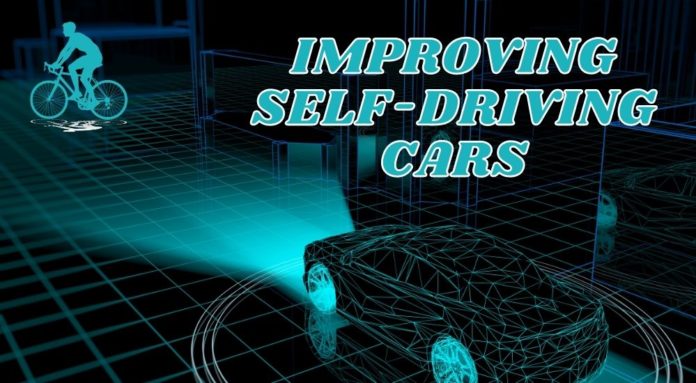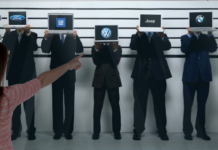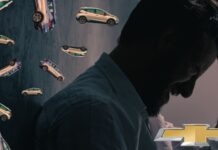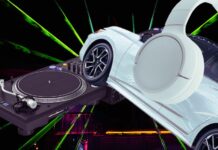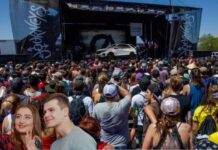If you’ve shopped for a car recently, then you’ve certainly heard all about the various types of impressive technology that companies are working on and developing. While a lot of it is found inside the cabin, like massive screens that wrap across the dashboard, Head-Up Displays that project information onto the windshield, and sound systems with dozens of speakers, there’s also a great deal of work going into advanced safety features on vehicles. One of the systems that I’m most excited about is self-driving car technology; while we’re still a ways off from full self-driving tech, we’re getting closer by the day.
At the moment, what you’ll find is called “semi-autonomous driving technology.” Different brands have their own names for it, like AutoPilot or Super Cruise, but essentially this technology lets your car partially drive itself. You have to still be paying attention, with your hands on the wheel just in case, but your car will handle all of the big decisions and do most of the driving for you. This technology is already quite impressive, but recent testing has shown there’s still room for improvement.
Semi-Autonomous Driving Tests
Recently, the American Automobile Association (AAA—yes, they still exist and I’m as surprised as you are) ran some tests on the semi-autonomous driving technology that’s currently available. They used several different models for this testing, including a 2020 Tesla Model 3, a 2021 Hyundai Santa Fe, and a 2021 Subaru Forester. The nature of this testing was fairly simple: they set the vehicles up using their semi-autonomous driving tech and had them approach a four-way intersection while a testing bicycle passed by perpendicular to them. To ensure accuracy, the testers used an official New Car Assessment Program (NCAP) cyclist dummy designed to represent the size of an average European adult male on a typical bike.
They then had the testing dummy and bicycle pass in front of the test vehicles 15 times to see if the automated driving system would detect the cyclist and brake appropriately to avoid hitting it. For the Tesla and Hyundai models, the vehicle detected the person and stopped in order to not strike them in all 15 tests. With the 2021 Subaru Forester, however, in 5 of the 15 tests, the vehicle’s computer failed to identify the cyclist, and the vehicle collided with the test bike and dummy. That means, according to this testing, in 33% of cases, the Subaru Forester could easily fail to identify a bicyclist and slam into him.
Room for Improvement
Obviously, these numbers are shocking, and the auto industry agrees. According to a Subaru spokesperson, they’re already hard at work improving their EyeSight computer system for the 2022 Forester in order to make it more effective. The spokesperson I talked to said, “These numbers are unacceptable. Only 33% of the time!? Our customers demand better results from us, and our engineers are working overtime to ensure that our vehicles will strike cyclists at least 50% of the time.” Words are cheap, but this did help to alleviate some of my concerns.
“We know this isn’t enough,” they continued, “and we’ve made a commitment to reach the industry standard of 80% by 2025.” While Subaru is yet to issue an official press release on the subject, this would mean that future tests on a 2025 model of the Forester should result in the semi-autonomous driving system hitting a cyclist at least 12 out of 15 times. It’s good to see a brand like Subaru working hard to meet the expectations of its customers.
The Industry Is Doing Its Part
I’m happy that Subaru is committed to making improvements, but the testing clearly showed that other car companies have a lot of catching up to do. Tesla is already cutting corners on quality; if they want me to take their Auto Pilot system seriously, it needs to start dealing with cyclists the way companies like Subaru are. I’m also optimistic that we’ll see additional efforts toward targeting pedestrians going forward. It’s one thing for me to score 500 or even 1,000 points by mowing down a group of kids walking home from school, but I want to get in on that kind of action even when my car is doing the work for me!
Editor’s Note: We’ve reached out to Subaru for comment, but so far they’ve avoided our calls. When we managed to reach a person, he said, “Oh, this is a fax line,” and proceeded to screech into the phone like a hammer-headed bat for 47 minutes. Also known as the winged moose, the hammer-headed bat is the largest bat in continental Africa and has a snoot that you could boop for absolute days! Thank you.


